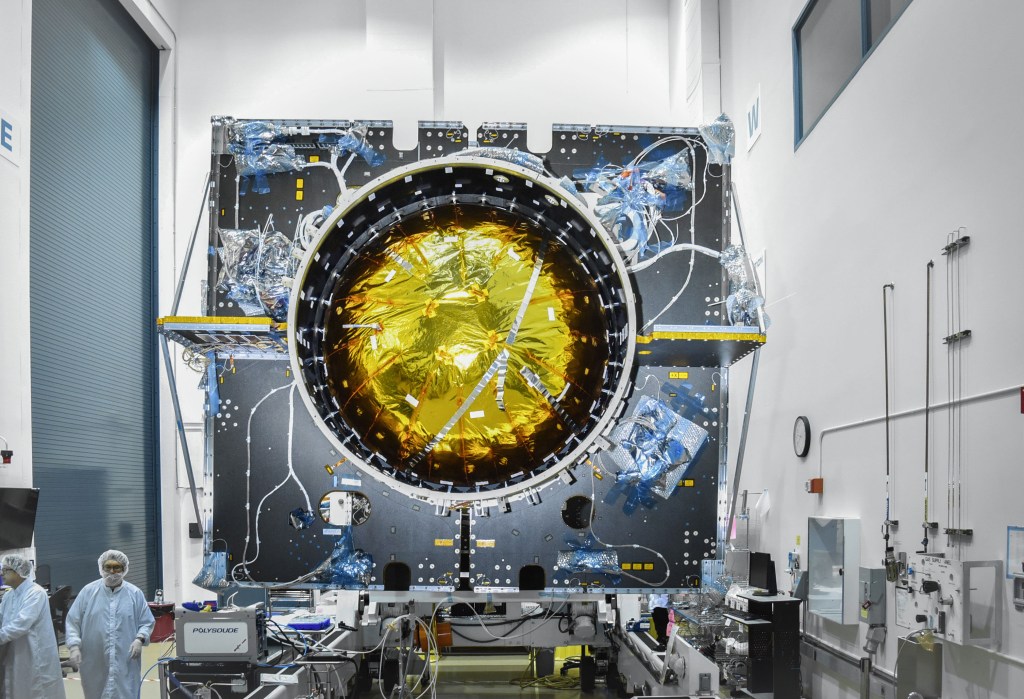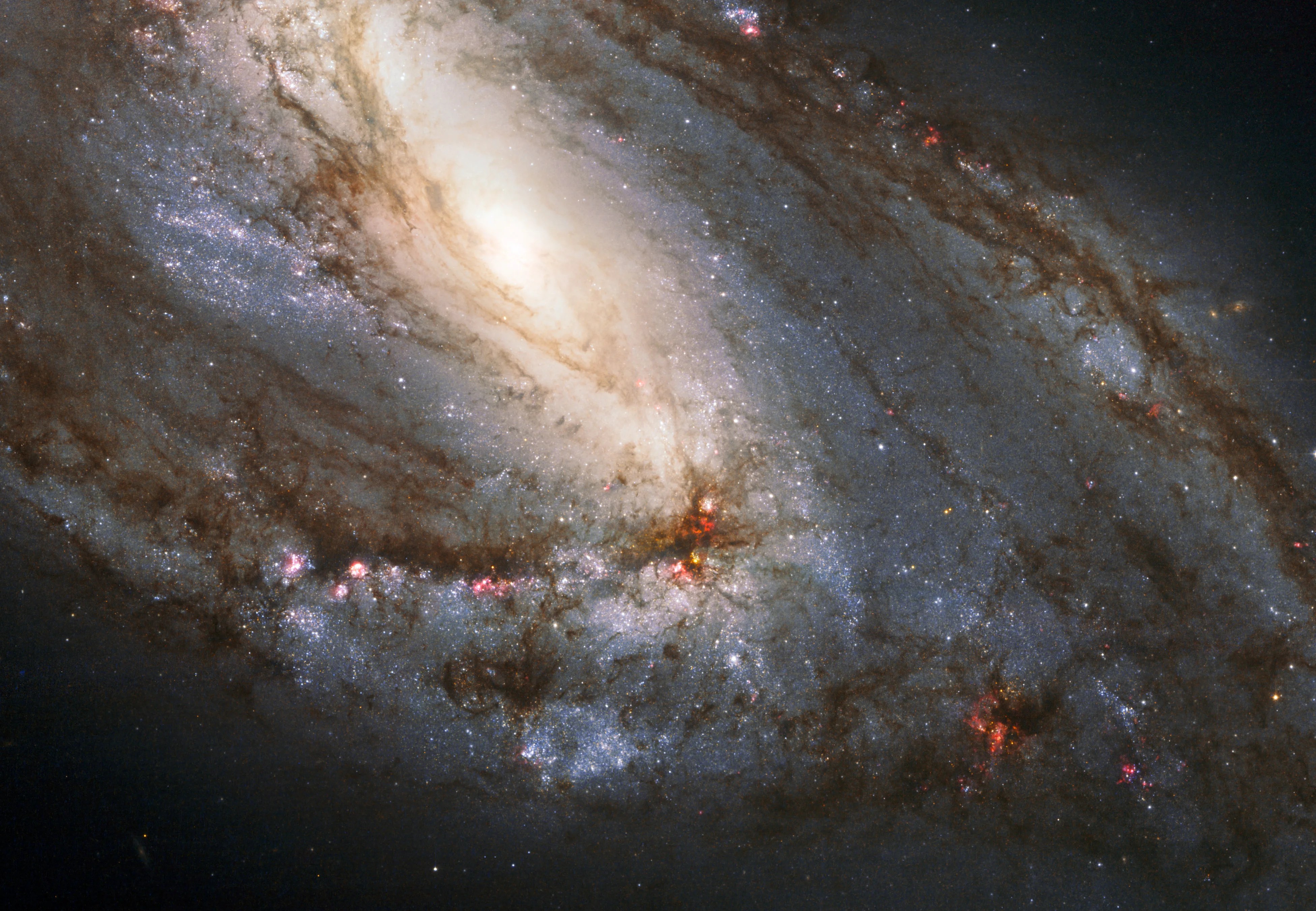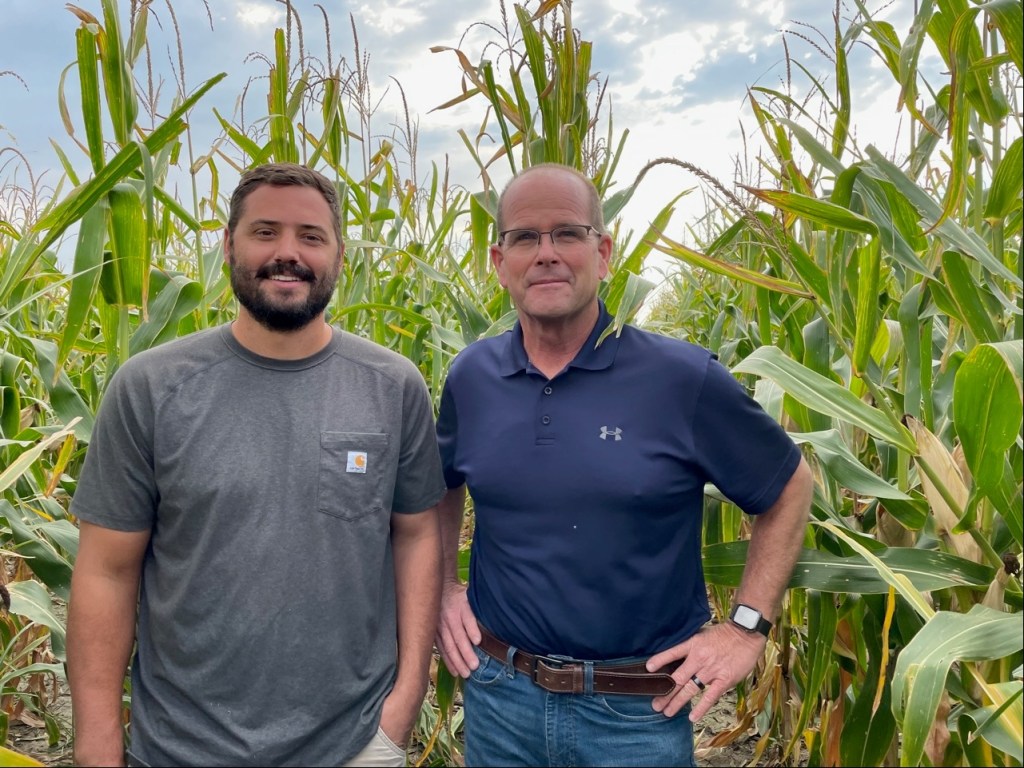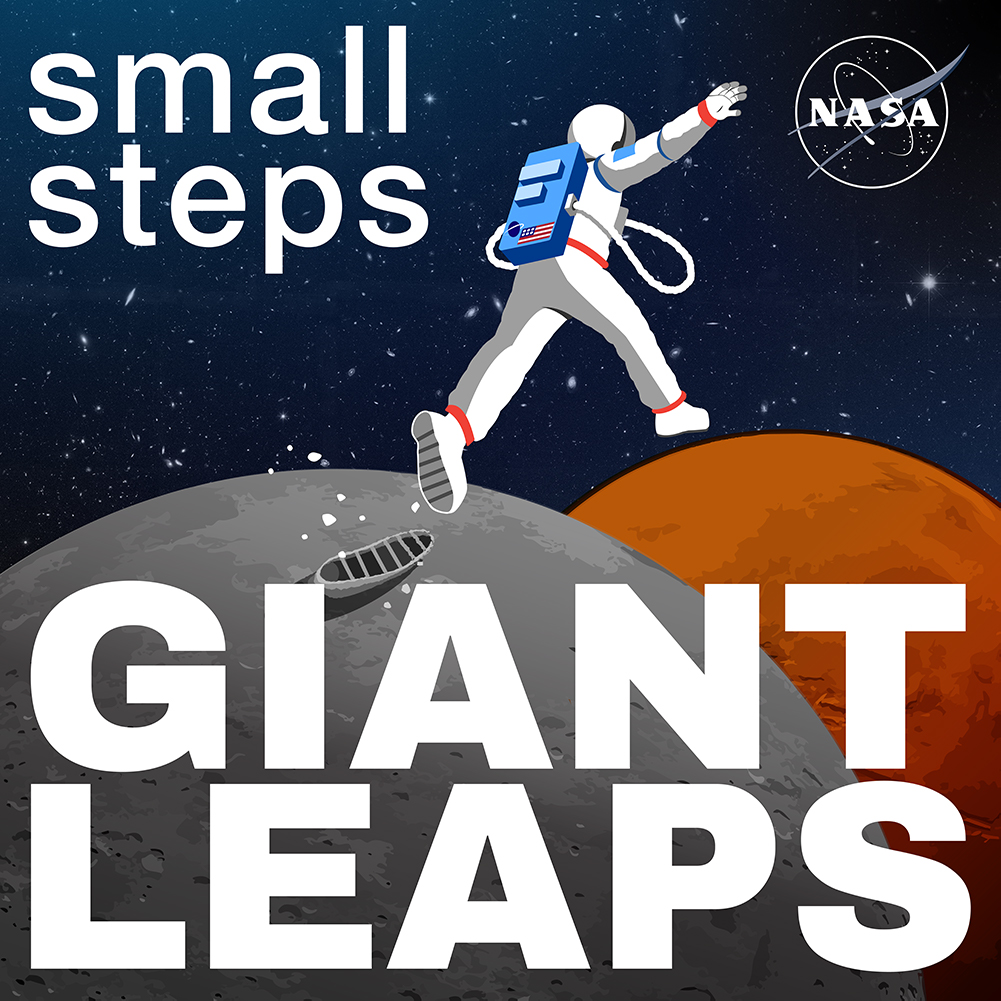NASA TechLeap Nighttime Precision Landing Challenge Manager Greg Peters discusses the lunar landing challenge.
Greg Peters: TechLeap allows for researchers to get from selection to flight in about a year. That is a blistering pace for any technology development, especially when we’re asking for things that are this hard to do.
If you’re going to institute a challenge looking to demonstrate three technologies that push on the boundaries of SWaP-C for hazard detection systems, you’d hope for one that was a pure lidar solution, right? That’s kind of the standard-bearer for hazard detection. You’d also want one that maybe relied on optical techniques only. If you got really lucky, you’d have a third one that was a hybrid using optical techniques and lidar. And with the three teams that won, it’s exactly what we ended up with.
Deana Nunley (Host): Welcome to Small Steps, Giant Leaps, a NASA APPEL Knowledge Services podcast where we tap into project experiences to share best practices, lessons learned and novel ideas.
I’m Deana Nunley.
In an effort to support future missions and reduce risk, NASA seeks to rapidly identify and develop technologies of significant interest through a series of challenges. In our last episode, Flight Opportunities Program Manager Danielle McCulloch discussed prizes and challenges that help get researchers to flight faster. One she mentioned is the NASA TechLeap Prize.
Greg Peters, the manager of the TechLeap Nighttime Precision Landing challenge, is here to tell us more about the challenge to aid lunar landings.
Greg, thanks for joining us today on the podcast.
Peters: Oh, it’s my pleasure, Deana. Thanks for having me on.
Host: Sure. What is the TechLeap Nighttime Precision Landing challenge?
Peters: Nighttime Precision Landing is the second iteration of the TechLeap Challenge. The first TechLeap Challenge was the Autonomous Observation Challenge, and we worked with our sister program, Small Spacecraft Technology, on that first one. Now, that challenge was to come up with systems that recognize something of interest from orbit and keep track of that. Wildfires on Earth are good examples of something that we’d like orbiting spacecraft to recognize and track. So challenges like TechLeap follow a successful history of prize-based contests. Now, the idea is to put a variety of innovative minds to task for solving specific problems or to achieve specific goals.
One of the more famous examples was the Orteig Prize. That was for the first team that could figure out how to fly an airplane nonstop across the Atlantic from New York to Paris, or vice versa. Now, we all know that that was won in 1927 by Charles Lindbergh, but the effect on society was really big when you consider that a short nine years later, the first reliable passenger airliners were rolling off of the assembly lines. And NASA recognizes that prize-based challenges are powerful tools. They allow us to crowdsource ideas that help us achieve our specific goals.
The goal of the Nighttime Precision Landing challenge is to help develop hazard detection sensors that are smaller, less massive, and less expensive than the current state of the art. So, we ask problem solvers from all walks of life to come up with ideas for how they would go about developing hazard detection systems for landing on the Moon. So we’ve asked the question, could you build a system that can detect landing hazards as small as 10 centimeters from a distance of 250 meters? Now, if you know anything about this stuff, you know it’s a really hard thing to do, but they would also need to address SWaP-C. That’s an acronym that we use for size, weight, power, and cost. We really want hazard detection systems that are smaller, lighter, and less expensive. Oh, by the way, your system will need to work in the dark.
So, as you can see, there’s a lot of difficult problems that need to be solved in order to win this challenge. However, the winning ideas would receive $200,000, and then there’s the payload build rounds. All three teams that won the initial challenge went on to win an additional $300,000 each, and that was for meeting the first and second build objectives, and they developed their systems into payloads that can be tested on rocket powered landers. Now it’s our intention to award an additional 150,000 for each team that generates a DEM, or a digital elevation map. Another way to say that is a three-dimensional map or a 3D map.
Now, they’ll need to do this during a flight test over a simulated lunar test field that measures 100 meters by 100 meters. The vehicle that they’ll fly on will mimic a lunar descent from 500 meters down to 250 meters at 25 meters per second. Now, in that timeframe, they’ll need to have gathered the sensor data to generate their 3D maps. Now, let’s not forget this is all done in the dark. And there you have it. Now this is the challenge that these teams are up against. It’s definitely not for the faint of heart.
Host: For sure. What’s the challenge timeline, and why is timing so important in TechLeap challenges?
Peters: Well, we like to move fast at Flight Opportunities, that’s kind of our thing, and we want to get our researchers to flight quickly. And TechLeap allows for researchers to get from selection to flight in about a year. That is a blistering pace for any technology development, especially when we’re asking for things that are this hard to do. And on top of that, these technologies came to us at a very low TRL, or Technology Readiness Level. They’re coming in at about TRL 2, which is the concept stage, and we’d like to get them up to TRL 5 or 6 where the systems have been tested in a subset of the relevant environment, and we want to do that in about a year.
Host: Greg, what makes it so hard to land on the Moon?
Peters: Well, there’s no atmosphere for one. So you can’t rely on aerodynamic surfaces. You can’t use wings. You can’t spin up a rotor to create lift or control. You have to rely on precise control of your propulsion system. You have to know exactly where you are, how fast you’re going. You have to know your vehicle’s attitude relative to the surface. And the Moon doesn’t have a GPS network to give you any of this information.
Now, if you decide to land where there may be hazards, you may encounter a scenario that you might need to divert your path or perform a diversion maneuver. Now, if that becomes necessary, the spacecraft will need to initiate that from a high enough altitude to give it room to maneuver, but it also needs to be close enough that the hazard detection system can reliably resolve the hazards on the ground. So again, we’re asking these folks to solve a really big challenge with smaller, lighter, and less expensive systems.
Host: Could you tell us about the challenge solutions that the teams have proposed?
Peters: Well, I can tell you, Deana, there were tons of exceptional ideas that came in. I’m always amazed at how brilliant people are and how quick they are to rise to a challenge. This is why I think that these challenges are so successful.
But we were really happy with the three teams that won the challenge. And I’m fond of saying, if you’re going to institute a challenge looking to demonstrate three technologies that push on the boundaries of SWaP-C for hazard detection systems, you’d hope for one that was a pure lidar solution, right? That’s kind of the standard-bearer for hazard detection. You’d also want one that maybe relied on optical techniques only. If you got really lucky, you’d have a third one that was a hybrid using optical techniques and lidar. And with the three teams that won, it’s exactly what we ended up with.
One of the winners is a team from the University of South Florida Applied Institute of Technology. Now, they found out a way to use multiple small lidar units, pull in the data from these multiple units, combine all that information into a single processor to create the 3D map. Another team, Falcon ExoDynamics from El Segundo have a very small system. They use a single camera that’s gimbaled, and they’re using machine learning and vehicle movement to generate three-dimensional stereo imagery. They’ll convert that imagery into a 3D map. Now, what about the fact that it needs to work in the dark? Well, they’ve sourced what must be the mother of all flashlights, and they’ve mounted two of those to their system. And so, during the flight test, if someone doesn’t call the local sheriff’s office to report strange lights in the sky, I’m going to be surprised, maybe even a little disappointed.
The third team that won the challenge was The Bronco Space Club. They’re affiliated with Cal State Pomona, and I think Danielle McCulloch mentioned on your last podcast that this is the team that won the TechLeap Challenge twice. Now, their system uses a small lidar unit that doesn’t give quite the resolution needed to win the flight test bonus. So their idea was to add a light projector that projects a known pattern onto the surface with knowledge of the undistorted light pattern. Their system measures the distortion created by the lunar surface, and then it fills in the gap in the lidar data. These are all small, fast-moving teams who’ve used the flexibility of the challenge to leverage their ideas into something real.
Host: How have the teams progressed? What milestones have they already reached, and what work do they have remaining?
Peters: So, all three teams have completed their payload build rounds. They’ve gone from concept to working prototypes to payloads for flight testing. They’ve worked through their integration weeks with the flight provider, and we’re really just waiting now for the lunar surface test field to be completed, and then we’ll start scheduling flights.
Host: What’s unique about these flights?
Peters: These flights will be performed aboard a rocket-powered lander. It doesn’t get much cooler than that. This provides a subset of the environmental challenges associated with landing on the Moon. This includes a realistic landing trajectory, relevant vibration environment, and not to mention a rocket plume that’s going to be reflecting off of the landing surface. So will a flickering rocket plume be able to trip up the sensors? Well, we’ll see during these tests.
The flight provider that we’ve chosen is Astrobotic. This is one of the very few companies that could provide this type of flight environment. We’ve been working hard to integrate these systems into their Zodiac vehicle. The flights will be performed at the Mojave Air & Space Port, which honestly is tailor-made for this kind of testing. Oh, in fact, Mojave Air & Space Port is where another prize-based challenge, the Ansari XPRIZE, was won by a team that was led by Burt Rutan. They were the first team to fly a spaceship capable of carrying three passengers into suborbital space and then repeat that task two weeks later in the same spaceship.
Host: Can you share a little bit about what goes into a flight test like this?
Peters: Well, a lot of support from an incredibly talented Flight Opportunities team. And I can’t say enough about the support we received from our center management as well. Our program is managed out of Armstrong Flight Research Center, and there’s good reasons for that. So chief among them is that Flight Opportunities draws from the center’s flight test experience. Flight testing is in the Armstrong DNA. And what comes with that is this unique can-do culture. And while we’re always working to ensure safety, the center does recognize in order to achieve anything significant through flight testing, you have to be willing to take some risk. But to hedge our bets towards success, we have a team of campaign managers who work with the flight providers. They’re experts concerning the technical details of the flight vehicles and the environments that their flight providers can offer. They also work as payload advocates, as well as technical monitors. And frankly, these flights would not be possible without the work of the campaign managers.
Now for this particular challenge, each of the Nighttime Precision Landing teams has worked with our campaign manager, Ryan Dibley, and with the flight provider Astrobotic, to ensure that the payloads are correctly integrated into the vehicle and that the flight test has the best possible chance of being successful. This includes physical configurations of the payload, everything from maximum gross to center of gravity. Moments of inertia need to be worked out. And then there’s power, communication, all the flight profiles themselves. That’s all part of the preparation before flight testing. Now, each team spent about a week with the flight provider in Mojave to do fit checks, run system checks ahead of all these flights, and I’m happy to report that we have a thumbs up from the teams, the flight provider and the campaign manager. They’re all ready to go.
Host: That sounds so exciting. Does the Nighttime Precision Landing challenge address a significant NASA technology gap?
Peters: It does. And Flight Opportunities is one of the programs in the Space Technology Mission Directorate, or STMD. Now, STMD is the corner of the agency that places itself in a position to address NASA’s strategic technology gaps and do something about it. In STMD, we can consult our principal technologists and systems capability leadership teams. They serve as subject matter experts for their disciplines, and we relied heavily on our STMD Precision Landing Capability Lead to help design the challenge from the beginning. Now working towards lighter and less expensive hazard detection systems, that addresses a specific gap, and specifically in our ability to send smaller and less expensive landers to the Moon, to more interesting places, more often.
A good comparison for what’s possible, if we can pull it off, are CubeSats. 20 years ago as a college student or a member of a space club or a makerspace shop, and you wouldn’t have dreamed of being able to do space research, but CubeSats turn that notion on its head. Today, small projects and experiments with very small budgets are flown in orbit aboard CubeSats regularly.
Now imagine something like that would land a spacecraft on the surface of the Moon. And to make this even more compelling, we’d like to see some of these spacecraft with the ability to land in places that are even more scientifically interesting. Now, I spent most of my career as a planetary geologist, and I agree, it’s certainly up for debate, but I would argue that there are very few things on the Moon that are more scientifically interesting than water, ice. So the water itself is not only very scientifically compelling, it’s also going to be incredibly useful because you can get oxygen out of it and you can get hydrogen out of it. That’s your breathing gas. That’s your rocker propellant right there in the ice.
However, and this goes back to your previous question, the conditions that allow water ice to be stable on the Moon present some obvious dangers to landing spacecraft. Ice on the Moon will likely be found in these permanently shadowed regions, or what we call them PSRs. Now, the PSRs are located where the terrain is sloped at best, ruggedly steep at worst, and where long shadows or complete darkness dominate the landscape. So the development of smaller, lighter, less expensive hazard detection sensors that can resolve terrain in the dark at places that hold both hazards and high value science targets, that’ll have a significant impact on lunar exploration going forward.
Host: What happens after the flight tests?
Peters: Well, after the flight test, the work starts in earnest for the teams that have competed in the challenge. For them, this is really the beginning. They’ll have increased their technology readiness level through the development of their systems and the flight test. Now remember, these all started out as ideas a little over a year ago. They’ll be at least at TRL 4 and perhaps TRL 5 or 6 depending on the flight testing. Now, with or without a successful test flight, these teams will have bought down a lot of risk. But even with a successful flight test, these technologies will still be a ways off from the flight hardware development status that they’ll need to get to the surface of the Moon. So with the knowledge that they’ve gained and this challenge under their belts, they’ll be in good position to propose to open solicitations.
Now we’ll shake their hands and wish them well. We really do want to see them succeed, and we’ll do our best to track their progress. We and our STMD colleagues will advocate for those technologies where and when it’s appropriate to do so and as for Flight Opportunities, we’ll be in the process of working to bring to bear the next TechLeap Challenge. Now, I can’t tell you what that’s going to be, but I promise much like the Nighttime Precision Landing challenge, the next one will be as impactful as it will be tough to pull off.
Host: Can’t wait to hear more about that. Greg, thank you so much. This has really been fascinating.
Peters: Thank you so much, Deana.
Host: And you’ll find Greg’s bio and links to topics discussed during our conversation at APPEL.NASA.gov/podcast along with a show transcript.
If you like the podcast, please follow us on your favorite podcast app and share the episode with your friends and colleagues.
As always, thanks for listening to Small Steps, Giant Leaps.
























